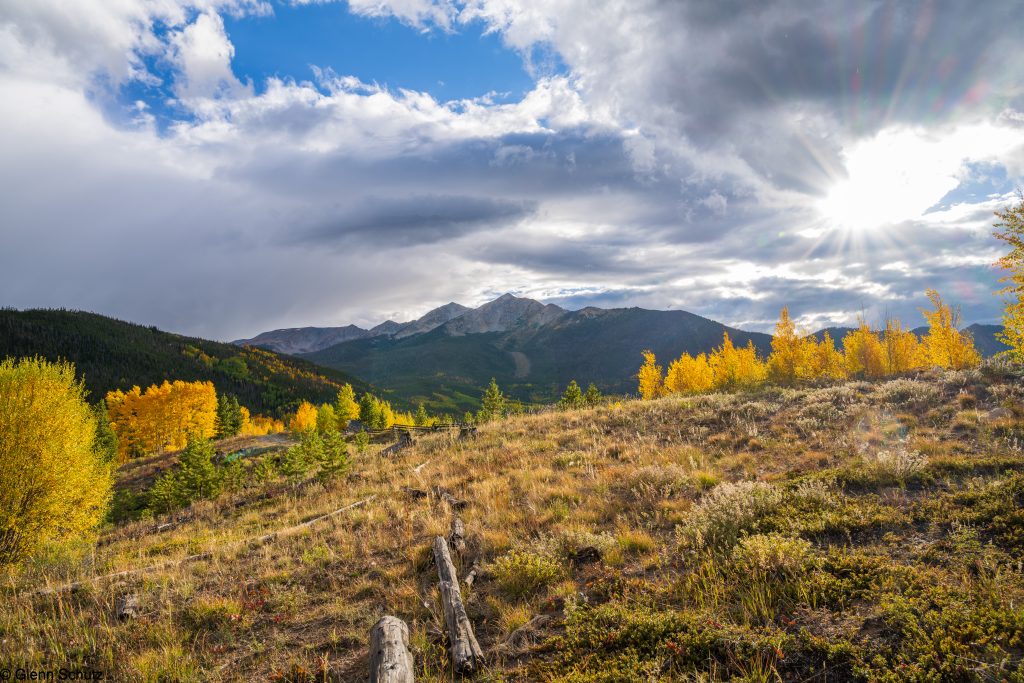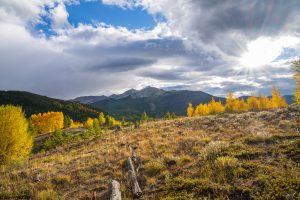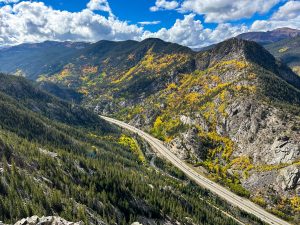Get Wild: Peak leaf-peeping time is here
Get Wild

Glenn Schutz/Courtesy photo
Aspen are not just beautiful to watch, they are fascinating plants. This year is as spectacular as ever, even though some meteorologists were predicting less brilliant color due to dry conditions. Perhaps our recent rainfalls have fixed that problem. There are many patches of orange aspens making the colors even more fabulous. The younger aspens tend to turn orange, and we have many young aspens due to some conifers being cut, and some wildfires allowing for aspen to take over those areas.
Our beautiful aspen is Populus tremuloides, meaning quaking aspen, or trembling aspen due to the leaves quaking or trembling in the breeze because of their flattened petioles (attachment of the leaf to the stem) which reduces the aerodynamic drag of wind on branches. In September, we can observe this quaking with the breeze creating a fluctuation of sunlight fluttering on the leaves. Along the Blue River, at lower elevations, we see our cottonwood tree, Populous deltoides, a close relative to aspen. Cottonwoods mostly grow along rivers or in wet places and thrive at lower elevations than aspen. Our aspens grow at higher elevations creating beautiful views of fall colors below the timberline.
Aspens are also able to photosynthesize through the bark, which is very noticeable in the spring months when that white bark commonly has a green glow. One of the most fascinating features of aspens is the rhizomatic nature of the root systems. This means that the stems of aspens run underground and generate new shoots, generating many new trees and colonies of trees. When we see a particular group of bright yellow trees this time of year, and nearby another group colored light green, we are seeing a colony of one organism of trees connected underground and, next door, another organism with slightly different colors. Individual trees may live for 50-150 years, but the connected root system of the colony can live for thousands of years.
In 2022, Australian reports claimed their country’s cloning sea grass was the largest organism on Earth. Colorado Governor Jared Polis responded, stating, “We don’t know what is going on down under, but up at our elevation we know Colorado’s gorgeous Aspen groves are a sight to behold and are the world’s largest plant.”
Aspens are a good defense against wildfire. They do not burn easily due to high moisture content. Their leaves and twigs are much less flammable than those of conifers. They can slow the rate of fire spread. When they do burn, the roots respond with more sprouting, creating even more trees. These new trees create a natural barrier for the next fire. A great example can be seen by hiking along Ptarmigan Trail where the Ptarmigan Fire burned in late September 2021. The lodgepole pines burned and died. The aspens were burned but survived, and then spread their root systems into the open areas where the pine trees died. Thick-growing young aspens were obvious the spring after the fire. Now, that same area is much richer in aspens and more resilient for another fire.
Sunlight is a great benefit for peak “leaf peeping.” The right light creates especially magical bright yellow appearances amongst our mountains. There are many theories about why the aspen are turning colors when they do. Each aspen colony responds differently, and good luck theorizing why each colony is turning on which days and which colors each year. They have centuries of experience and many mysteries for us humans to postulate about each fall.
Enjoy the beauty and mysteries of our amazing aspen while we await a big snowfall.
“Get Wild” publishes weekly in the Summit Daily News. Karn Stiegelmeier is a volunteer wilderness ranger and board member of Eagle Summit Wilderness Alliance.


Support Local Journalism

Support Local Journalism
As a Summit Daily News reader, you make our work possible.
Summit Daily is embarking on a multiyear project to digitize its archives going back to 1989 and make them available to the public in partnership with the Colorado Historic Newspapers Collection. The full project is expected to cost about $165,000. All donations made in 2023 will go directly toward this project.
Every contribution, no matter the size, will make a difference.









